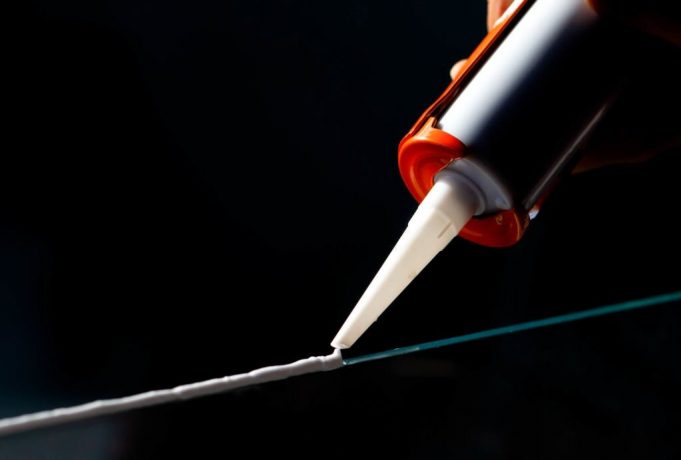It may come as a surprise to a large number of people that the caulk simple gun that is hanging in their shops through a nail can be one of the most significant tools that they can use. Some examples of how useful caulk guns can be are that you can easily weatherproof and waterproof all kinds of surfaces in your household which will efficiently prevent any damage, keep you comfortable and make sure that you save a lot of money.
Before beginning, ensure you get the correct devices. The particular sort of caulk you get will rely upon the kind of work you’re doing. For an indoor activity, somewhere presented to a ton of water, similar to a bath, you’ll need a silicone caulk that goes about as a sealant and furthermore repulses dampness—an incredible resistance against buildup and mold. For work that won’t see as much water or daylight, similar to the baseboards around the cellar floor, a latex caulk may better suit your necessities.
Latex grows to fill fissure somewhat superior to silicone assortments, yet rehashed presentation to rain, daylight, or water will make them separate a lot sooner than the last caulk. Your nearby home improvement shop can enable you to figure out what’s best for you.
Uses of a cork gun
Any kind of material that is available in an appropriate size tube can be easily used in caulk guns like silicone, epoxy, adhesive, caulk, and even cementitious items. Talking about the various projects in which this can be essentially utilized, the following main projects come into mind.
- Soundproof a room by using caulk gun in cracks on the top of the baseboards
- Paintable exterior grade caulk around outlets and outdoor lighting.
- Landscape adhesive in order to attach caps to retaining wall blocks
- Using caulk gun in other cracks that cause airflow inside.
- For linkage of studs to drywall
- As sealants like epoxies
- Silicone sealant around showers and tubs in bathrooms
- Around doors and windows
Where to not use a caulk gun
Although there are many places where using the caulk gun can be very helpful, there are certain gaps or cracks where using a cork gun is not the best idea. We recommend you to not use a gun for:
- Sealing around shower drains or tub
- tuckpointing brick
- for fixing sink traps
- leaking expansion joints between pavers and concrete slabs
- smoothing out defects like surface depression
- filling out joints
- filling screw or nail holes.
- Kinds of caulks
Manual caulk guns
As the name proposes manual caulk guns are highly reliant on the power of the hand to grasp a huge handle propelling a bar with a circle on its end. The said plate firmly fits into the posterior of the cylinder and gives an even and level utilizing surface.
This is one of the more typical and famous caulk guns. You don’t have to utilize close to as much strain to get the caulk out as it has a pushed proportion of 10 by 1. The pole utilizes a spring stacked plat lock that pushes a weighted pole. This bar makes it conceivable to change the weight precisely as you need it by crushing the trigger with various weights.
When you discharge the trigger the progression of caulk will stop. This sort of configuration is less exhausting in light of the fact that you get double the measure of weight utilizing the trigger than you do with a manual caulk gun.
Powered Caulk Guns
Electrical caulking weapons are the best kind of caulking gun because of their usability and particular components. Some utilize battery-powered batteries for power, while others are stopped straightforwardly into an attachment.
On the off chance that you plan to deal with a major venture, at that point, an electric caulking weapon suits you better since it is a lot simpler to work and permits high exactness caulking on any undertaking. Then again, manual caulking weapons use constrain triggers to begin and stop. They don’t expect power to capacity, and they are most appropriate for little undertakings.
How to use a cork gun
Warm the caulk tube
The first step in using a caulk gun is to make sure that the caulk tube is warned. To do so, all you need to do is put the tube in an environment that is fairly warm for approximately a couple of hours. The reason behind this is that all the adhesives and Caulk are more likely to flow smoothly on a temperature that is higher than 40 degrees Fahrenheit.
Clean the area
Before beginning this process, make sure the area where you are intending to use the caulk gun is clean – free of grease and oil and dust-free.
Appropriate caulk tubes nozzle
In order to do so, you will have to remove the cap which is at the end of the tube. After that, you can use either a cock guns cutter or simply a utility knife to cut the end of the nozzle.
Puncture the tube
In order to puncture the tube, you can use a puncture device that is normally situated on the gun itself and looks like a blunt nail to puncture several times.
Load the cock tube
In order to load the tube, you will need to put the caulk tube inside the gun after pulling the gun’s rod completely. After which you will have to push the rod gently so that the metal disc neatly gets fixed at the back of the tube.
Tension up the caulk gun
Push the caulk rod front by holding the caulk gun’s trigger until the caulk starts oozing from the caulk nozzle.
Dispense the Caulk
Ensure the movement of the gun smoothly and evenly for approximately 10 minutes to do the job.



















